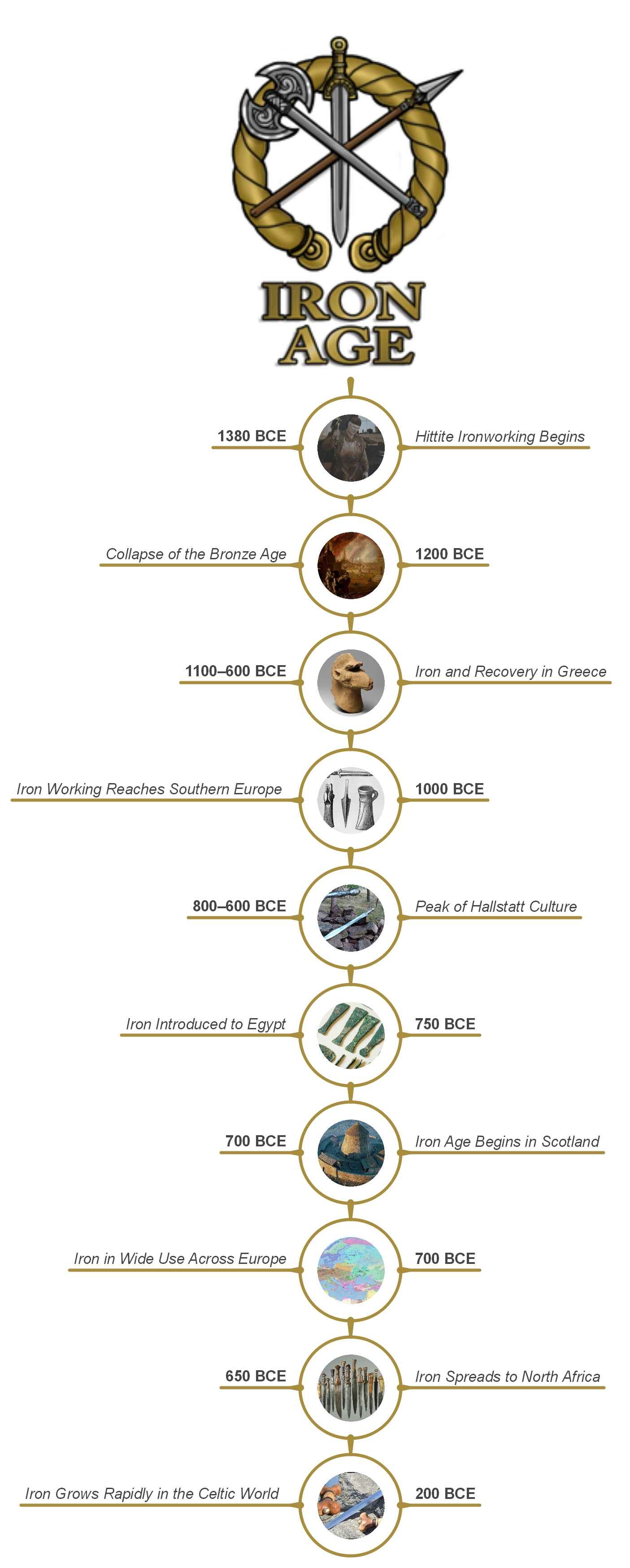After the Bronze Age, people needed something better than bronze. Tin was rare. Bronze was expensive. It was iron that gave people the tools to rebuild. It was harder to shape, but worth it. Around 1200 BCE, people started making iron tools. Slowly, iron replaced bronze everywhere.
By 700 BCE, iron ruled from Europe to the Middle East. Farmers, soldiers, and builders all used it. It wasn't shiny like bronze, but it lasted longer and hit harder. This timeline explains how iron spread. How people improved it. And how it shaped history.
Part 1: Iron Age Timeline
The Iron Age lasted from around 1200 to 500 B.C.E. and followed the Bronze Age. It changed everything. Around 1200 BCE, people started using iron instead of bronze to make tools and weapons. It was stronger, cheaper, and easier to find.
As iron spread, so did new ideas. Farming improved, wars got fiercer, and empires began to grow. Let's have a closer look at how this new metal helped shape a whole new era of human history.
1380 BCE: Hittite Ironworking Begins
In Anatolia, the Hittites began experimenting with iron. It wasn't common yet, but it was a start. They used it for weapons, tools, and ceremonial objects. At first, iron was rare and valuable like gold in today's world.
Their blacksmiths were secretive. Knowledge of ironworking was protected, even hidden. But their early efforts laid the foundation. Soon, iron would spread beyond their borders. And slowly, this tough metal would replace bronze across the ancient world.
1200 BCE: Collapse of the Bronze Age
Empires fell. Cities burned. Trade routes broke down. The Bronze Age collapsed suddenly. With no tin for bronze, people turned to iron. It was harder to work with, but more available.
This shift wasn't planned - it was survival. As chaos spread, iron filled the gap. Slowly, it moved from sacred to practical. People had no choice but to adapt. The result? The Iron Age began not with celebration, but out of necessity and crisis.
1100 - 600 BCE: Iron and Recovery in Greece
In the wake of the collapse, Greece entered its "Dark Age." It wasn't peaceful, but it was productive. Iron tools helped rebuild agriculture. Iron swords armed warriors in a new kind of warfare.
By 800 BCE, Athens began rising again. Public buildings were built in the Agora. Daily life improved. With iron, people farmed better, defended better, and slowly began to thrive again. Greece wasn't done - it was just getting started, thanks in part to iron.
1000 BCE: Iron Working Reaches Southern Europe
Iron spread to southern Europe by 1000 BCE. Local cultures picked it up fast. Farmers used iron sickles and hoes. Blacksmiths made simple weapons and household tools.
This was practical progress. Iron helped communities grow stronger. It supported trade, agriculture, and defense. These weren't empires yet, but they were learning. Each village and tribe gained more control over its environment. Iron gave them that edge, and slowly shaped a new social order.
800 - 600 BCE: Peak of Hallstatt Culture
In central Europe, the Hallstatt culture took ironworking to new heights. Named after a site in Austria, they made fine swords, tools, and ornaments. Chiefs were buried with iron weapons and gold.
This was a culture of skill and style. Salt mining made them wealthy. Iron made them powerful. They shaped early Celtic traditions. Their influence spread across Europe. The Hallstatt people didn't just survive; they thrived with iron at the center of life.
750 BCE: Iron Introduced to Egypt
Iron showed up in Egypt by 750 BCE. At first, it was rare and controlled by elites. It wasn't used widely, but that would change. Tools and weapons made of iron began to appear more often.
Bronze was still used, but iron was rising fast. Pharaohs saw its potential. Blacksmiths adapted old techniques to work the new metal. Egypt didn't lead this change, but it didn't resist it either. Iron quietly reshaped their world from the bottom up.
700 BCE: The Iron Age Begins in Scotland
By 700 BCE, iron had reached Scotland. Stone and bronze tools were replaced. Hillforts were built. Iron swords and plows improved life and defense. Communities grew stronger and more connected.
This marked the beginning of Scotland's Iron Age. It was a slow change, but a real one. The tools got sharper. Homes got sturdier. Warfare became more organized. Life became more structured. Iron gave people control over land, crops, and even conflict.
700 BCE: Iron in Wide Use Across Europe
During this time, iron wasn't rare - it was everywhere. Farmers, warriors, and artisans used it daily. It made plows tougher and blades sharper. Villages grew into larger communities.
The change was steady and practical. Iron helped people tame the land, store food, and build better homes. It wasn't flashy. But it was effective. Across Europe, iron was changing lives; quietly, efficiently, and powerfully. It was the backbone of progress in a changing world.
650 BCE: Iron Spreads to North Africa
Iron reached North Africa by 650 BCE. Carthage and nearby cities began using iron tools. Blacksmiths adapted quickly. Farmers saw immediate benefits. So did local soldiers and hunters.
The spread was driven by trade and necessity. Iron tools improved agriculture. Iron weapons strengthened defenses. North African cultures began evolving with this new technology. From simple farms to growing cities, iron supported every part of life. It was more than a tool; it was a transformation.
200 BCE: Iron Grows Rapidly in the Celtic World
Iron was booming by 200 BCE in the Celtic world. Tools were everywhere: knives, sickles, weapons, even cooking gear. It wasn't new anymore. It was essential.
Iron made farming easier and warfare more advanced. It also showed status. Skilled blacksmiths became important figures. Iron became part of everyday identity, from the fields to the battlefield. This wasn't just metal; it was a symbol of progress, power, and pride.
Part 2: How to Make an Iron Age Timeline using EdrawMind?
The Iron Age was the time when people began using iron tools and weapons. Making a timeline helps show key events and cultures from this period in order.
If you want to make a timeline and don't have experience with diagrams, try using EdrawMind. It is easy for beginners and has many tools and templates to help you create diagrams easily.
Let me show you how to make the Iron Age timeline with EdrawMind:
Step 1: Start a New Project
- Open EdrawMind and sign in with a social account.
- You can also sign up for a free Wondershare account.
- Or use EdrawMind online in your web browser.
- Click the Create button at the top left.
- Pick Local MindMap to make a new file.
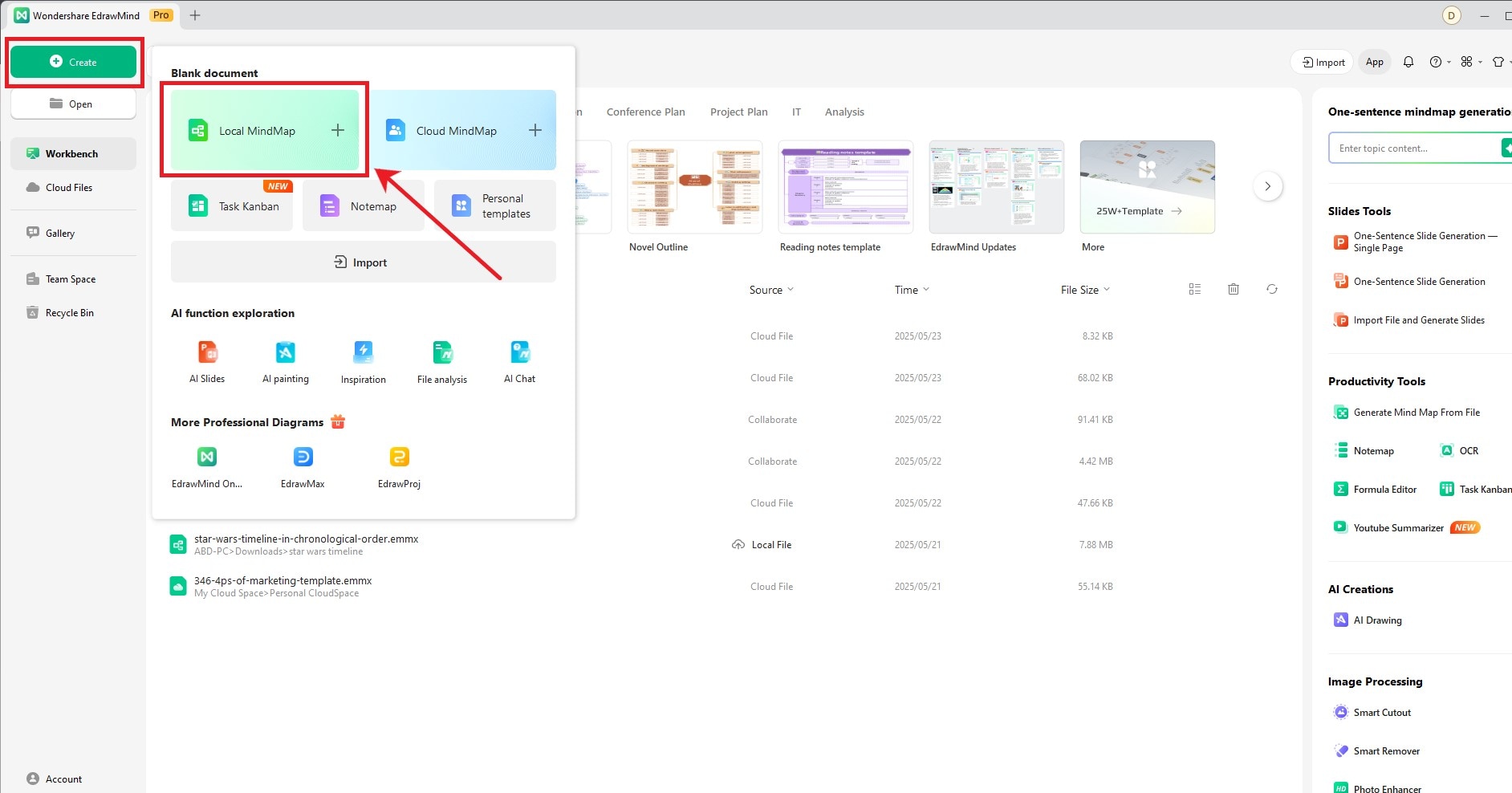
Step 2: Choose Timeline Style
- Click the Main Idea.
- From the floating menu, choose Layout.
- Select Timeline (down) from the list to get a certain timeline layout.
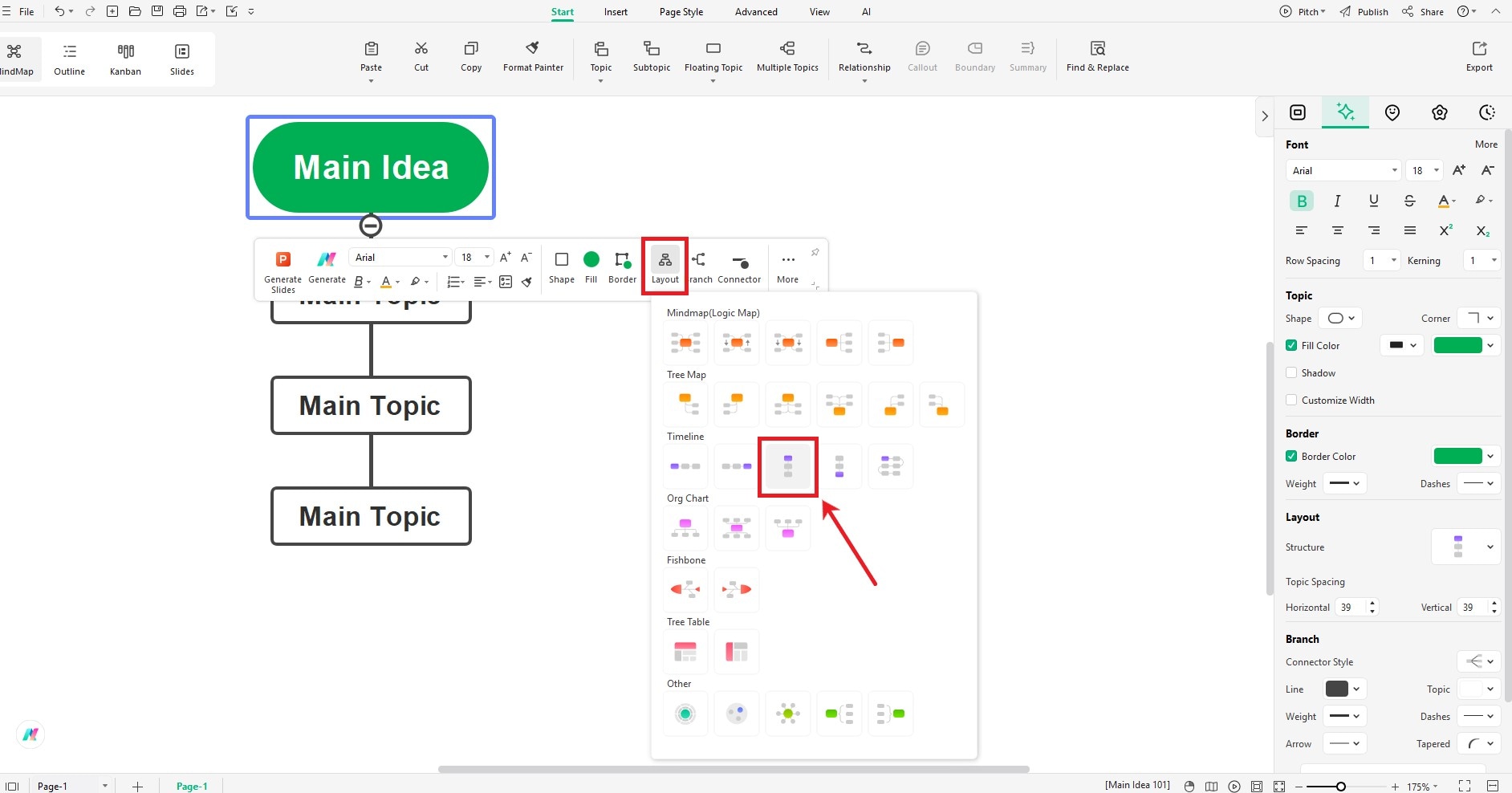
Step 3: Add Timeline Events
- Click the Main Idea and go to More on the floating menu. Choose Topic to add a new item.
- Click a Main Topic.
- Select Subtopic to add more events.
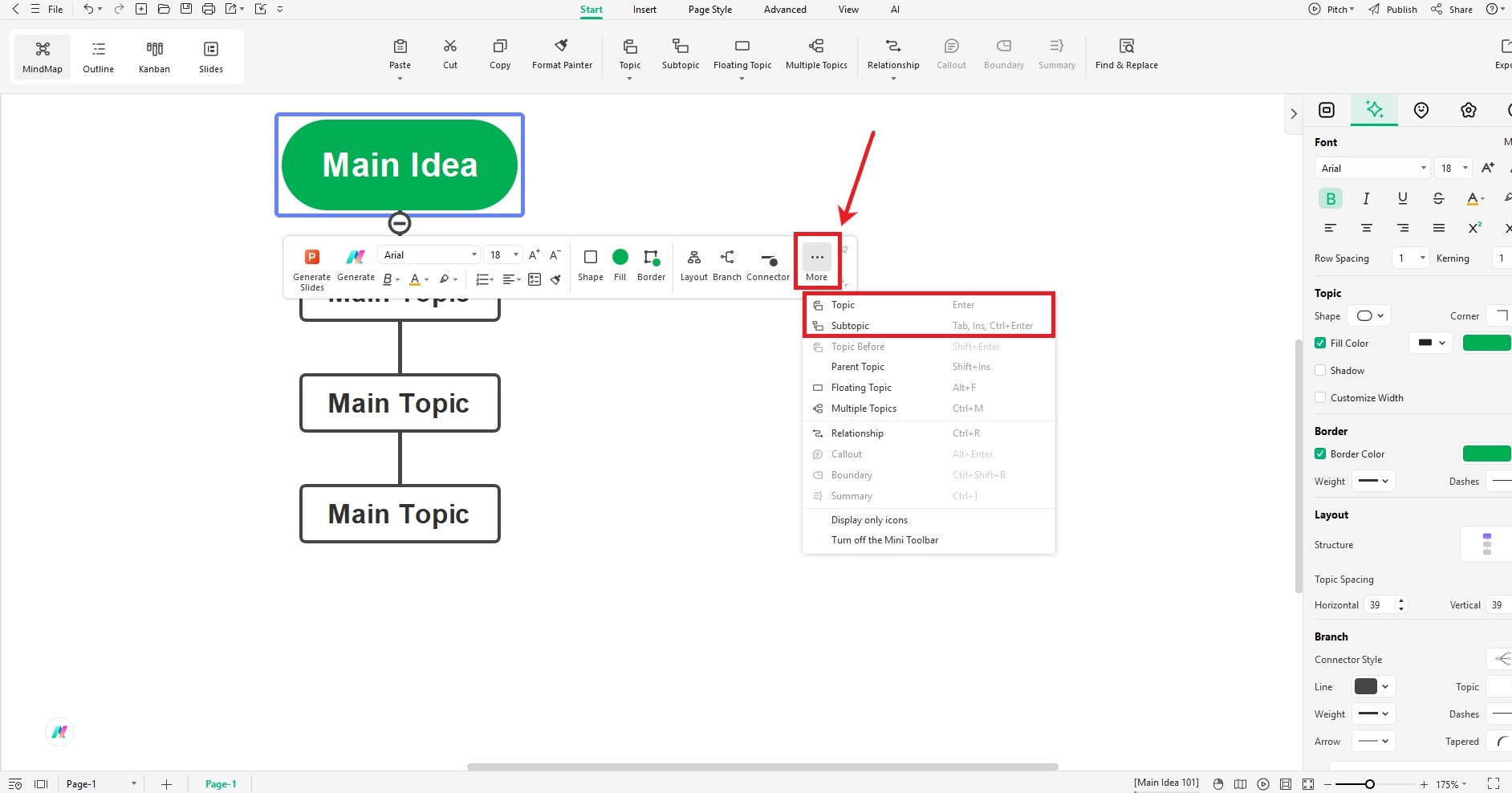
Step 4: Edit the Timeline Design
- Click one part or the whole timeline. Use the floating menu and right toolbar to make changes.
- Double-click a topic to edit the text. Just type in your own timeline info.
- Change the font size, color, style, and more from the floating menu.
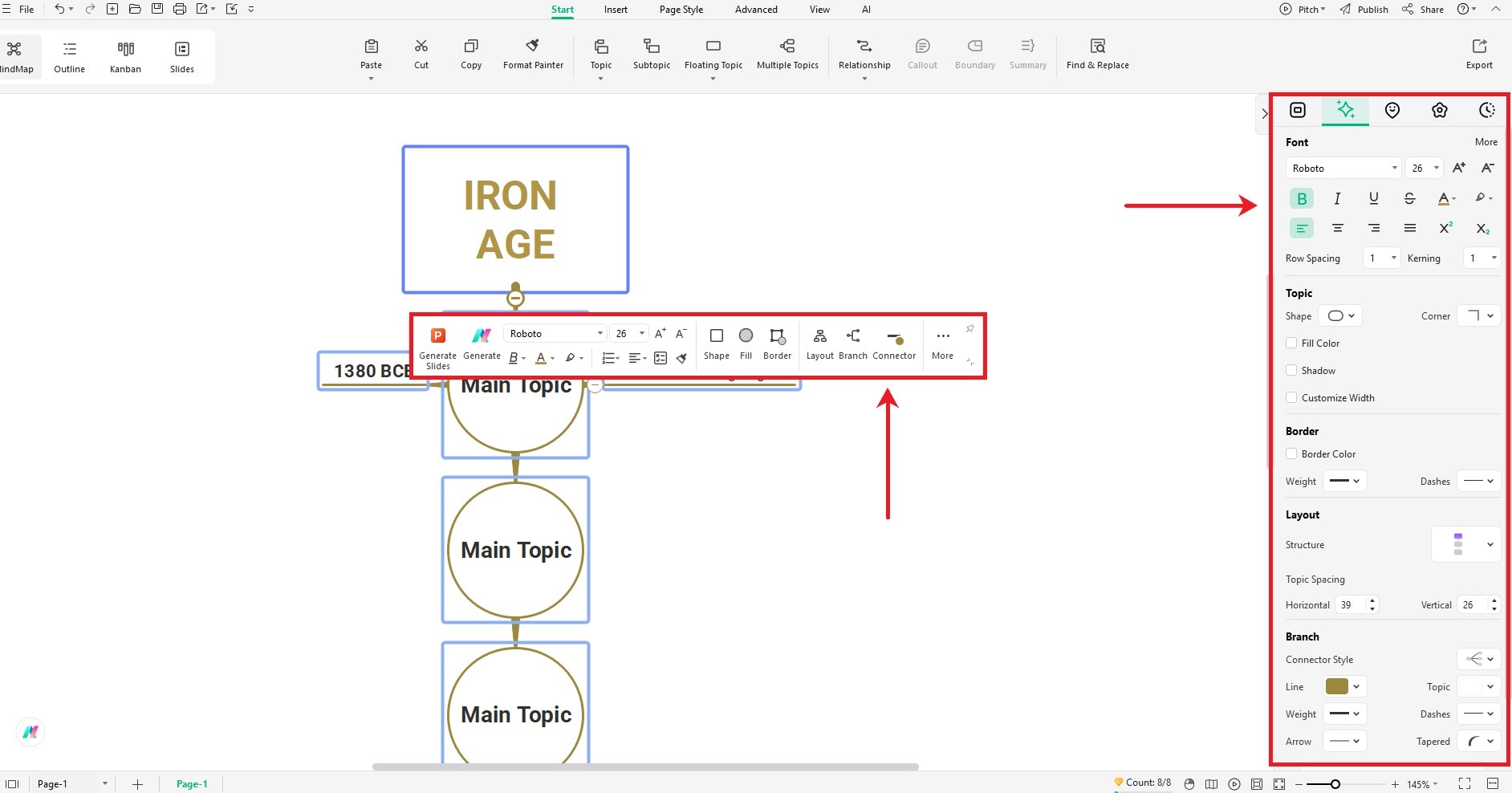
Step 5: Add Pictures to Events
- Download an image and open it in EdrawMind.
- Once added, use the floating menu or the toolbar to edit image settings.
- You can also drag the image into a topic to add it.
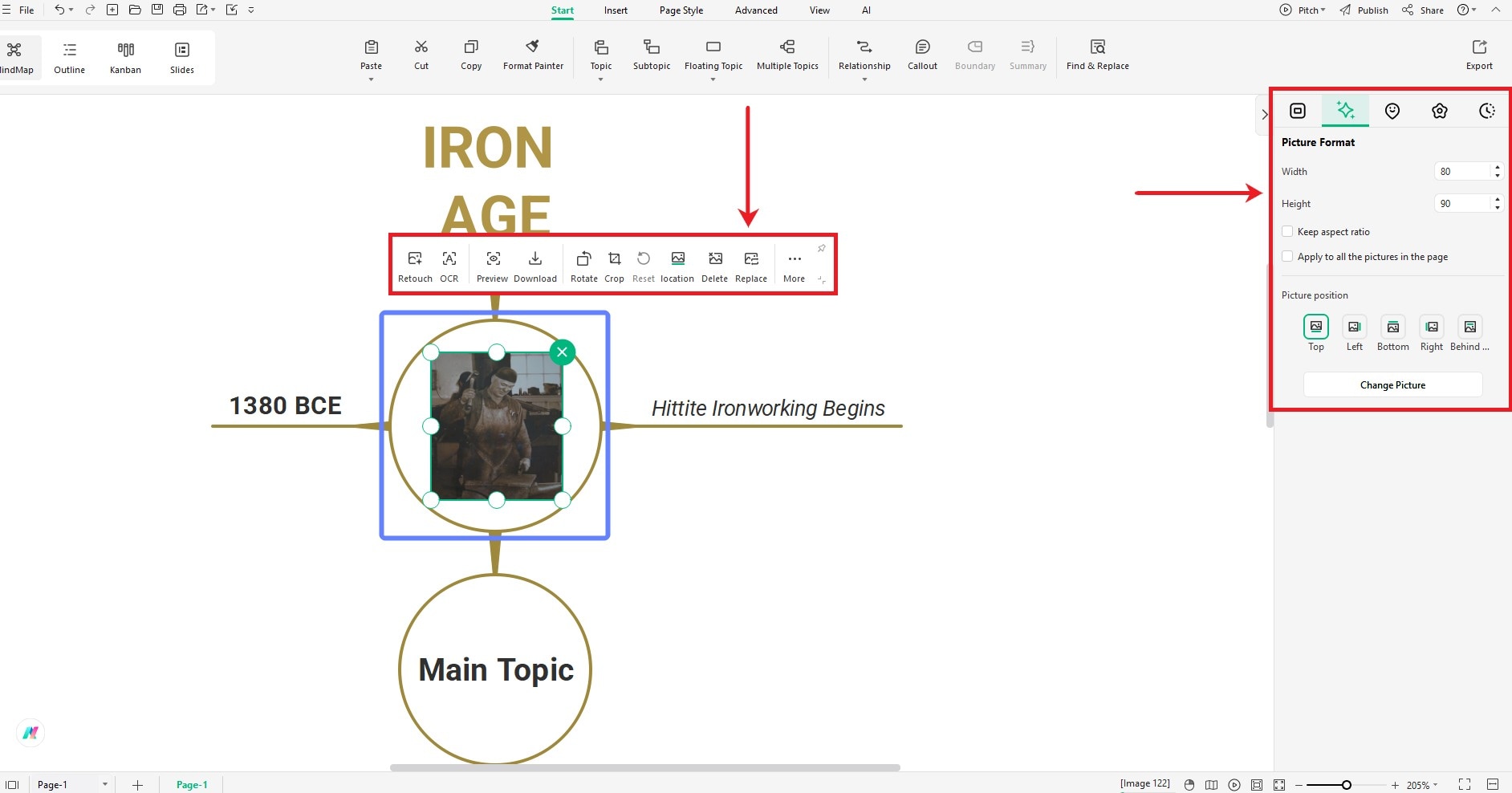
Step 6: Save or Export Your Work
- After finishing, click the File button at the top-left.
- Choose Save to keep the file in EdrawMind's format.
- Click Export to get the file in another format.
- Export options available are PNG, JPG, PDF, PPT, and many others.
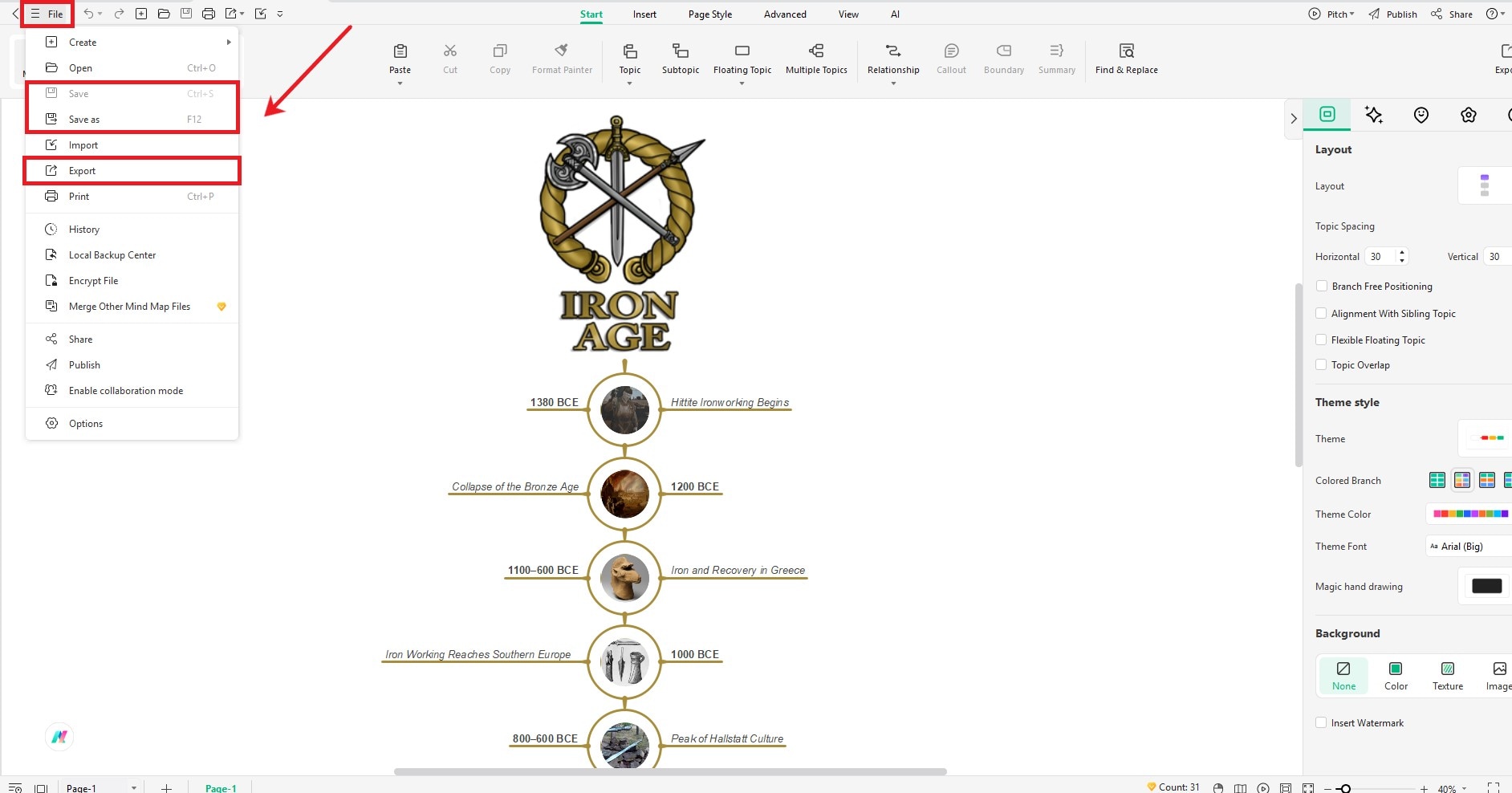
Closing Remarks
Iron didn't just replace bronze; it reshaped the world. Little by little, people learned to work with it, build with it, and fight with it. From small villages to powerful cultures like the Celts, iron helped everyone grow stronger and smarter. It wasn't easy at first, but it paid off big time.
So, do you want to make your own timeline just like this one? Try EdrawMind! It's easy to use, perfect for students, teachers, or history lovers. It helps you turn complex info into clear and visual timelines. Start creating today, and bring your ideas to life with just a few clicks.



